The Vikings, renowned for their bravery, cunning, and seafaring prowess, had been raiding and trading along the coasts of Europe for centuries.
But in the early 9th century, they turned their attention to the northernmost reaches of the British Isles, seeking to claim the rich resources and strategic locations of Shetland and Orkney for themselves.
Between 793 and 876 CE, the Vikings launched a series of brutal and bloody campaigns against the native Picts and the fledgling kingdoms of the region.
The Vikings’ arrival marked the beginning of a new era in the history of Shetland and Orkney, one characterized by conflict, conquest, and cultural exchange.
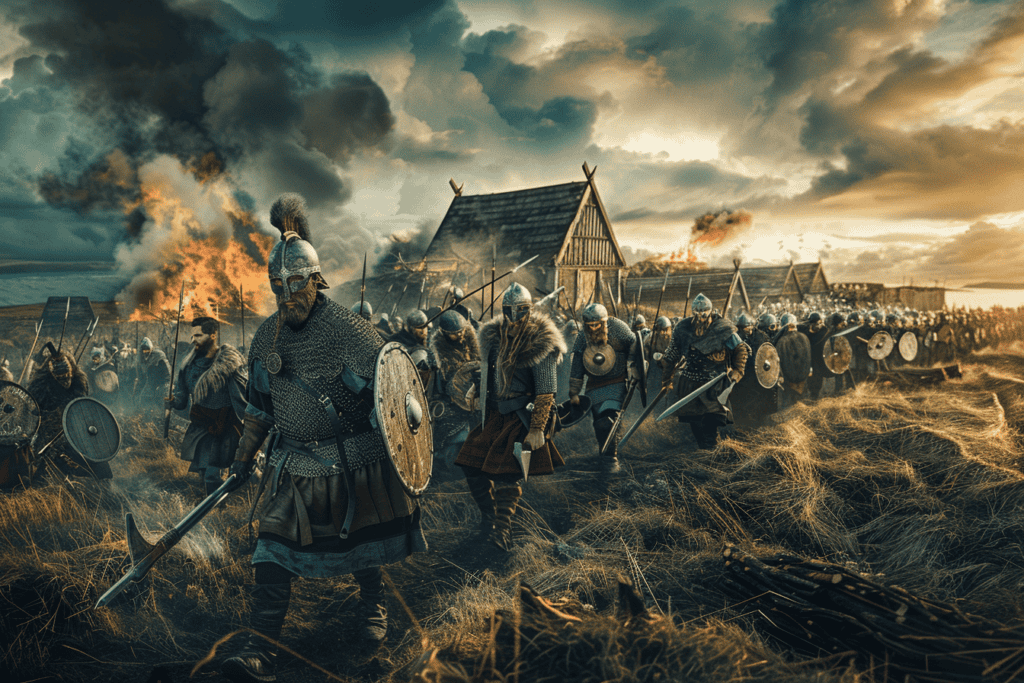
The Vikings arrived in Shetland and Orkney from western Norway around 850 AD and subsequently settled in the islands, giving rise to what is known as the Norse Period.
Both Shetland and Orkney became Viking, and later Norse, strongholds until 1469 when the rule was passed over to Scotland, bringing a close to over 600 years of Viking influence.
The imprint left by the Vikings on the islands still exists to this day, with many place names, geographical features, and personal names having Scandinavian roots.
The Viking conquest and settlement in Shetland and Orkney is a complex and fascinating topic that has been the subject of much research and debate.
Despite the passage of time, the legacy of the Vikings can still be seen in the place names, language, and culture of the islands, making them a unique and important part of Scottish history.
The History of Viking Presence in Orkney and Shetland
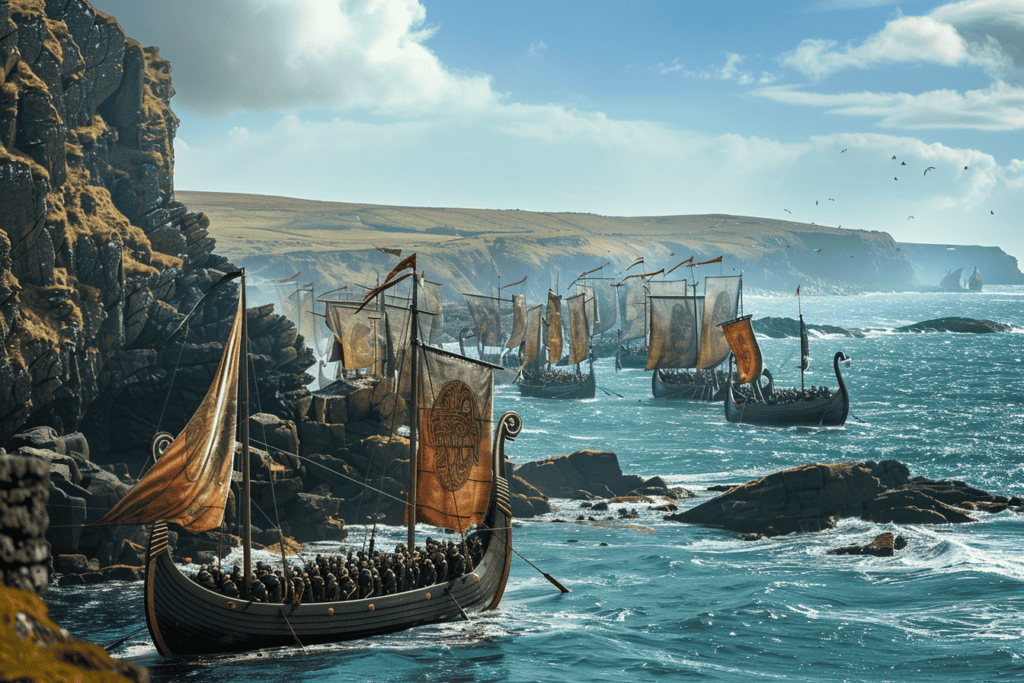
The Viking Age, which lasted from the late 8th century to the mid-11th century, was characterized by a significant expansion of Scandinavian seafaring activity.
The Vikings, who were primarily from Norway, Denmark, and Sweden, were known for their maritime prowess and their ability to navigate long distances across the open sea.
The Vikings’ migration patterns were driven by a range of factors, including overpopulation, political instability, and the search for new land and resources.
As a result, they began to venture further afield, raiding and settling in new territories across Europe and beyond.
Viking Raids and Early Contact
The earliest recorded Viking raid on the British Isles took place in 793 AD, when a group of Norse warriors attacked the monastery on the island of Lindisfarne off the coast of Northumbria.
This marked the beginning of a period of sustained Viking activity in the region, which saw the Norsemen raiding and pillaging towns and villages along the coasts of Britain and Ireland.
Orkney and Shetland, which lie to the north of mainland Scotland, were among the areas targeted by the Vikings during this time.
The islands were strategically important due to their location on major trade routes between Scandinavia and Britain, and they were also rich in natural resources such as fish, timber, and fertile land.
The Vikings established a significant presence in Orkney and Shetland during the 9th and 10th centuries, with settlements and trading posts being established across the islands. These settlements were often located in sheltered bays and harbors, and were used as bases for raiding and trading expeditions further afield.
Historical evidence suggests that the Viking presence in Orkney and Shetland was not the result of forcible land-taking, but rather a gradual process of integration and co-existence with the native Pictish population.
Over time, the Norse settlers adopted many aspects of Pictish culture, including language, religion, and social customs, while also introducing their own traditions and practices to the islands.
Local Cultural and Societal Impact

The Viking conquest and subsequent settlement of Shetland and Orkney had a significant impact on the local language and place-names.
Old Norse, the language of the Norse settlers, became the dominant language in the region and had a lasting influence on the local dialects. Many place-names in the islands, such as Lerwick and Scalloway, have Norse origins and reflect the Norse culture and society that once thrived in the region.
The sagas, a collection of Old Norse stories and legends, also provide valuable insights into the language and culture of the Norse settlers.
Religion and Belief Systems
The arrival of the Norse settlers in Shetland and Orkney brought with it a new religion and belief system. Paganism was the dominant religion of the Norse settlers, and many of their religious practices and beliefs were incorporated into the local culture.
However, with the arrival of Christianity in the region, the Norse settlers gradually converted to Christianity, and the old pagan beliefs and practices were replaced.
The influence of Christianity can still be seen in the region today, with many churches and other religious buildings dating back to the early Christian period.
Despite the significant cultural differences between the Norse settlers and the local populations of Shetland and Orkney, there was a degree of integration between the two groups.
The Norse settlers interacted with the local population and adopted some of their customs and practices.
For example, the Norse settlers adopted some of the Gaelic and Pictish place-names in the region, and there is evidence of intermarriage between the two groups.
Over time, the Norse settlers and the local populations developed a shared culture and society that was influenced by both Norse and local traditions.
Archaeological and Historical Evidence
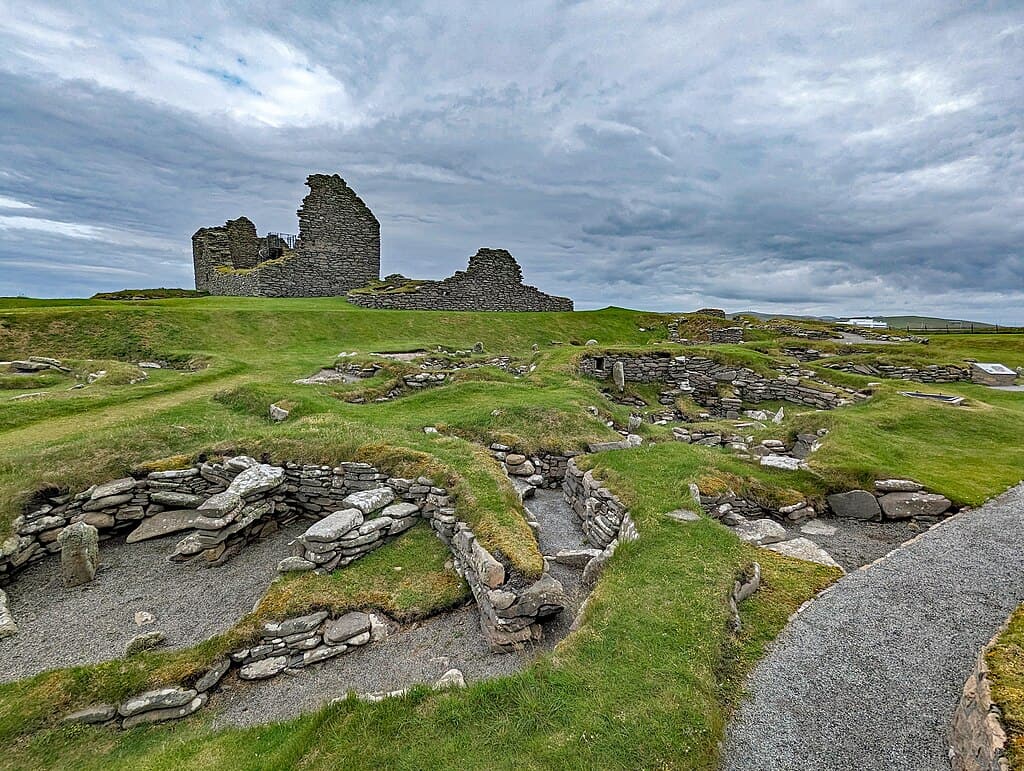
The archaeological evidence found in Shetland and Orkney suggests that the Viking settlement patterns were varied and complex.
The Brough of Birsay in Orkney is a prime example of a Viking settlement that was built on a small tidal island, which was connected to the mainland by a causeway. The settlement consisted of a large hall, several smaller buildings, and a smithy.
The architecture of the buildings was simple, with walls made of turf and stone, and thatched roofs.
At Buckquoy in Orkney, the remains of a Viking farmstead were excavated. The farmstead consisted of a longhouse, a byre, and a barn, which were arranged around a central courtyard.
The longhouse was the main dwelling, and it was divided into three rooms, with the central room being used for cooking and communal activities. The walls of the longhouse were made of turf and stone, and the roof was thatched with heather.
Burial Sites and Grave Goods
The Viking burial sites found in Shetland and Orkney provide valuable insights into the Viking way of life. The burials were often accompanied by grave goods, which included weapons, jewelry, and everyday objects.
The grave goods suggest that the Vikings placed great importance on their personal appearance and status.
At Scar in Shetland, a Viking boat burial was excavated, which contained the remains of a man and a woman, along with a wide range of grave goods, including swords, axes, jewelry, and textiles. T
he boat was also equipped with oars and a rudder, suggesting that it was intended for use in the afterlife.
Economic and Trade Activities
The Viking economy in Shetland and Orkney was based on farming, fishing, and trade. The Vikings were skilled farmers, and they introduced new crops and farming techniques to the islands. They also established a thriving fishing industry, which provided them with a valuable source of food and income.
The Vikings were also skilled traders, and they established trade links with other parts of the Viking world, as well as with the wider European continent. The archaeological evidence suggests that the Vikings traded in a wide range of goods, including furs, fish, wool, and slaves.
Legacy of the Vikings in Orkney and Shetland
The impact of the Vikings can be seen in the modern-day reflections of the people of Orkney and Shetland. The Orkneyinga Saga, written in Iceland in the 12th century, tells the great story of Orkney’s Viking age.
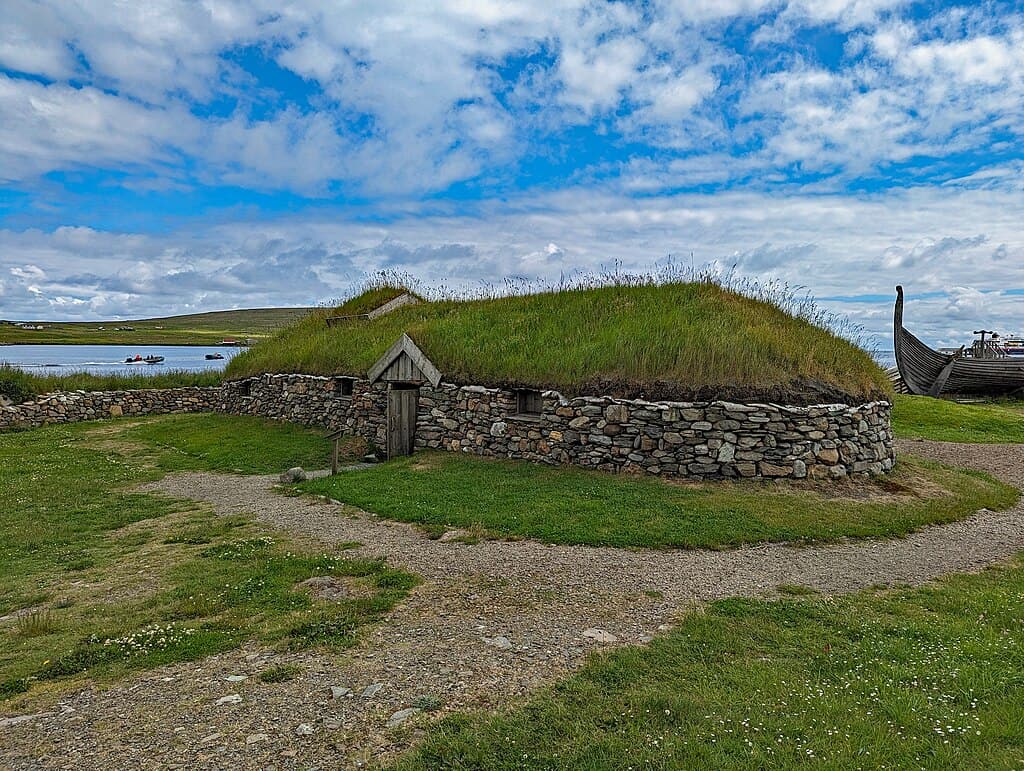
The saga is still celebrated today, and visitors can follow in the footsteps of the Norse through the Orkneyinga Saga Trail, with interpretation boards marking key Viking events and places.
Similarly, in Shetland, the imprint of the Vikings can be seen in the names of places, geographical features, birds, and parts of boats that have Scandinavian roots.
The Shetland dialect is infused with words that have Viking origins, and the islands’ cultural heritage is celebrated through events such as the Up Helly Aa festival, which pays tribute to the islands’ Viking heritage.
The linguistic and genetic imprints of the Vikings are also evident in Orkney and Shetland. The Vikings brought their language with them. Many place names in the islands have Viking origins.
The Orkneyinga Saga, Heimskringla, and other sagas written by Snorri Sturluson provide valuable insights into the Viking language and culture.
In addition, genetic studies have shown that the Vikings left a lasting impact on the islands’ population. The Y-chromosome, which is passed down from father to son, provides evidence of patrilineal ancestry from the Viking period.
The Viking conquest and settlement have also left a lasting impact on the islands’ cultural heritage. This heritage is celebrated through events such as the Up Helly Aa festival.

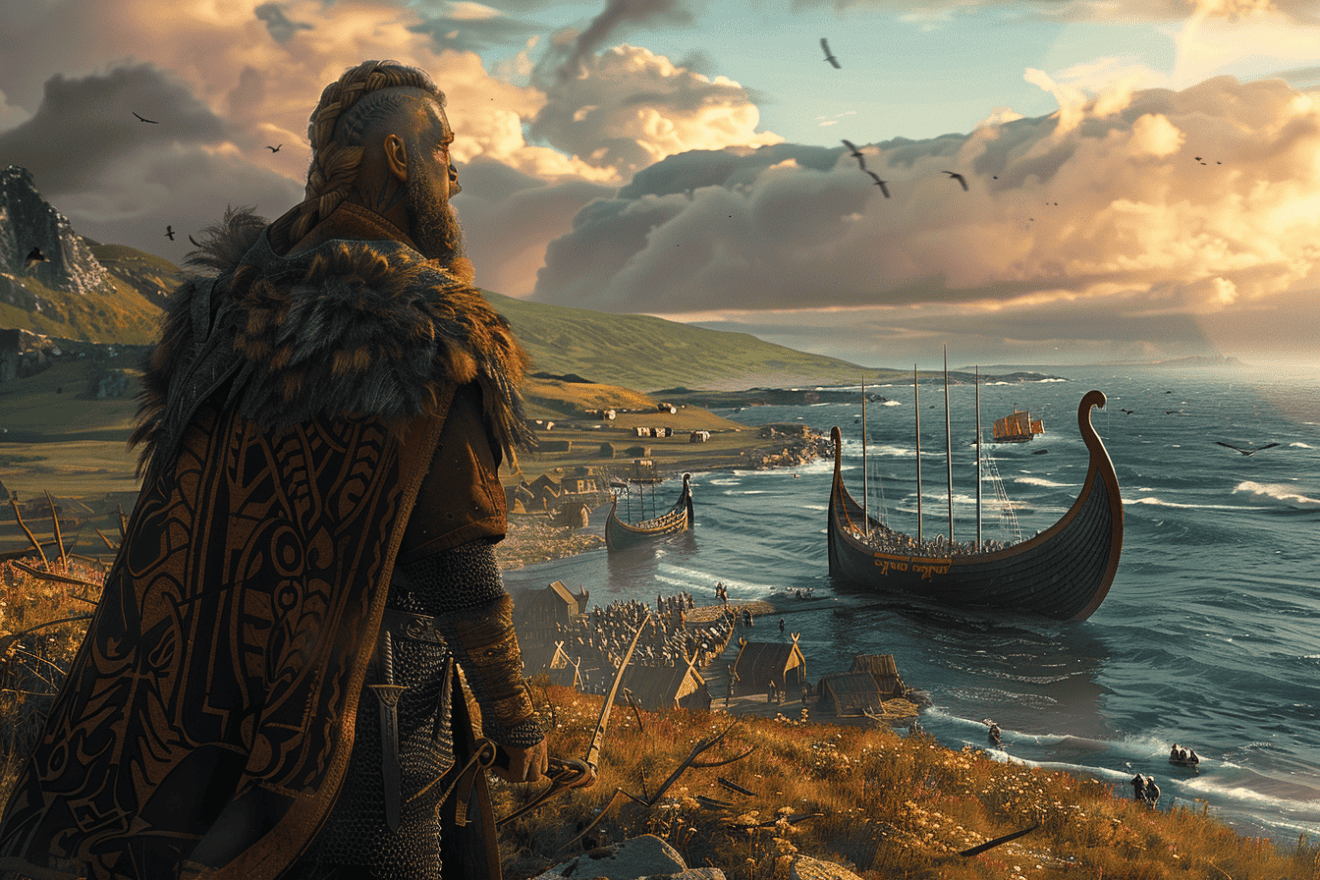
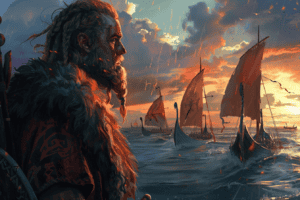
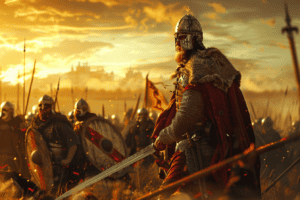






Add Comment